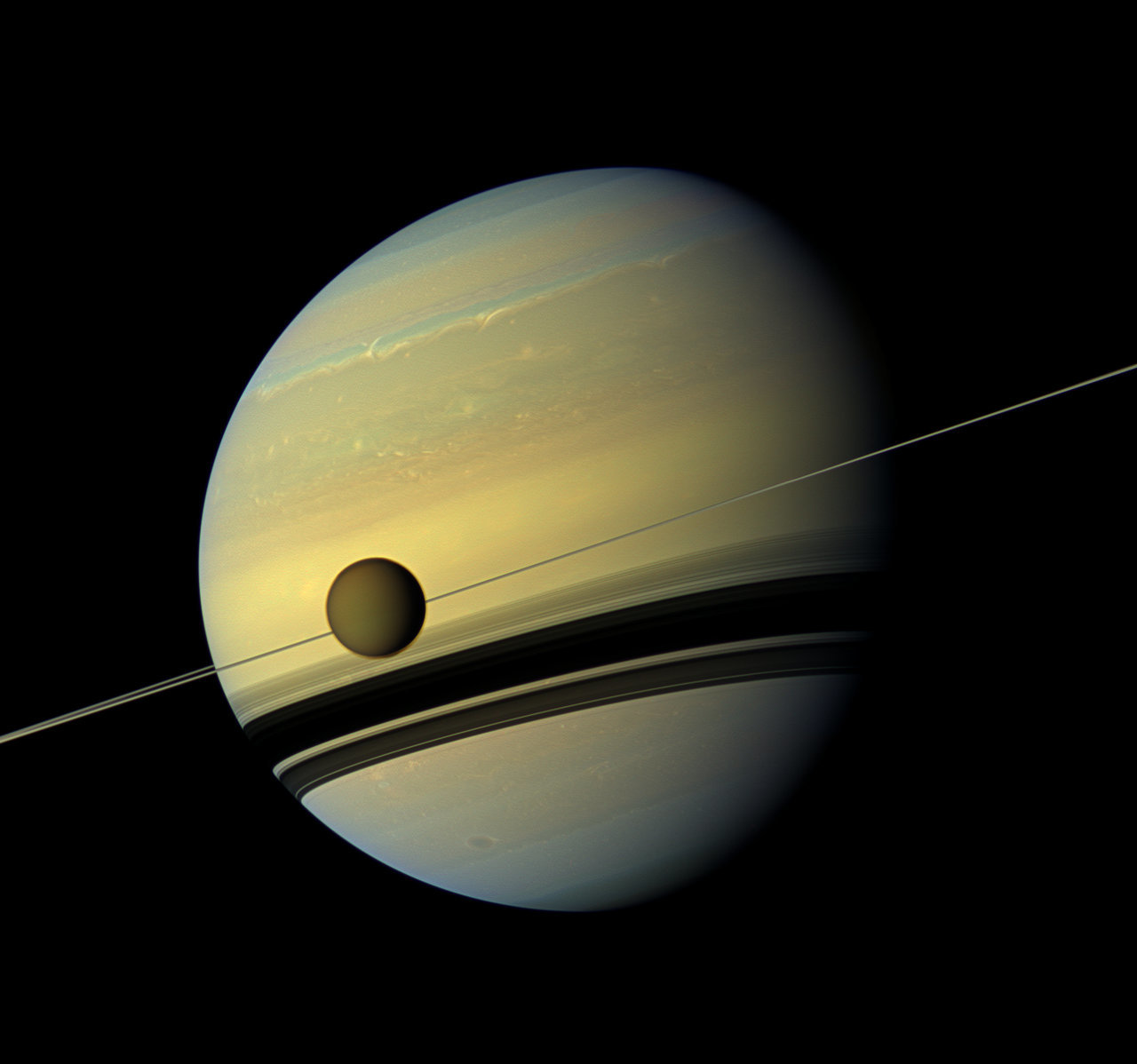Hurricane winds in Titan's high atmosphere
Titan, one of Saturn's largest moons, is the only satellite in the Solar System with a complex atmosphere, resembling the primitive Earth. Very strong and confined winds have been detected in the high atmosphere of the satellite, where it seemed to be not enough energy to trigger such fast winds
Titan, Saturn's largest satellite, is a unique object: larger than Mercury, it is the only object in the Solar System, in addition to Earth, with dunes, rivers and lakes. It is also the only satellite that presents a dense atmosphere, and has a cycle similar to the hydrological one on Earth, but controlled by methane. Now, an international group of astronomers, with the participation of the Institute of Astrophysics of Andalusia (IAA-CSIC), has revealed another unexpected peculiarity of this orange moon: very confined and fast winds, of up to three hundred forty meters per second, blow in the high atmosphere, fed by waves from the lower atmosphere. The results are published in the journal Nature Astronomy.

THE MOON WITH PLANETARY ATMOSPHERE
The density of Titan's atmosphere exceeds that of Earth, and it generates a pressure on the surface that is somewhat greater than on our planet, similar to that of the bottom of a pool. As in the Earth's atmosphere, nitrogen dominates (98.4%), but the rest of the components, such as methane (1.4%) and other organic compounds establish great differences. Titan also shows what is known as "super rotation": it rotates very slowly - it takes sixteen Earth days to complete a turn on itself - but its winds move faster than the surface itself (something that also happens in Venus, but on a larger scale).
"The winds on Titan had been studied previously using different methods -says Luisa María Lara, a researcher at the Institute of Astrophysics of Andalusia (IAA-CSIC) who participates in the work-. We knew that very strong winds were blowing in the stratosphere, up to two hundred meters per second, which also varied with latitude and seasons, but we did not know what was happening in the highest layers, between five hundred and twelve hundred kilometers, which was an incomplete view of the dynamics of Titan's atmosphere".
JETS ON TITAN
The researchers observed Titan with ALMA, a set of antennas located in the Atacama desert (Chile), focusing on six specific molecules present in the mesosphere and thermosphere of the satellite. "We saw that the emission peaks of these molecules were displaced in frequency with respect to the theoretical value, which can only be explained by a wind that transports the material in the regions probed by the observations", explains Lara (IAA-CSIC).
These are winds faster than those measured in the low and middle atmosphere, which extend in height along the thermosphere and whose circulation progressively becomes a jet stream (a very fast and narrow air flow), which reaches three hundred forty meters per second at a height of one thousand kilometers (for comparison, the most powerful hurricanes on Earth have generated winds of about one hundred meters per second).
“All the observations and studies carried out to date pointed to an insufficient energy balance to give rise to fast winds in that region of the atmosphere, and finding them has been a surprise. The explanation we propose suggests that waves that propagate vertically from the stratosphere and mesosphere upwards are capable of depositing energy at a thousand kilometers. This energy, plus that provided by solar radiation in the extreme ultraviolet (EUV), are responsible for the winds in that region", concludes Luisa María Lara (IAA-CSIC).
E. Lellouch et al, An intense thermospheric jet on Titan, Nature Astronomy, April 2019.
Instituto de Astrofísica de Andalucía (IAA-CSIC)
Unidad de Divulgación y Comunicación
Silbia López de Lacalle - sll[arroba]iaa.es - 958230676
https://www.iaa.csic.es
https://divulgacion.iaa.csic.es

